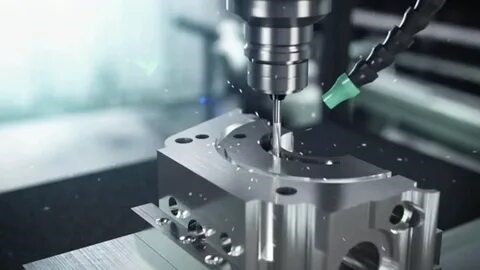Effectively bringing innovations from concept to market can make the difference between success and failure in the quickly evolving field of medical device development. Rapid prototyping services have completely transformed this procedure, which allows medical device manufacturers to iterate swiftly, validate designs sooner, and eventually provide patients with life-improving technologies faster. This powerful approach is key for businesses trying to stay ahead of the competition while negotiating the intricate regulatory environment of medical device development.

Key Benefits of Rapid Prototyping Services in Medical Device Development
Accelerated Design Validation and Iteration
Rapid prototyping significantly shortens the design cycle as it allows medical device engineers to quickly convert digital designs into physical models. The creation of working prototypes takes days or even hours as opposed to weeks for conventional manufacturing processes. This acceleration makes it possible to test several design iterations in the time that would have been needed for a single prototype. This speed enables teams to quickly test mechanical functionality, ergonomics, and design viability when creating devices like patient-specific implants or minimally invasive surgical tools, spotting and fixing possible problems before they become expensive ones later in the development process.
Enhanced Stakeholder Communication and Feedback
Physical prototypes are effective communication tools that help close the knowledge gap between technical specifications and practical applications. More insightful input is given by doctors, patients, and regulatory specialists when they are able to physically handle a device prototype as opposed to just looking at digital renderings. Clinical stakeholders benefit from this practical experience by being able to spot usability issues or make suggestions for enhancements based on their medical knowledge that might otherwise go unnoticed.
Cost-Effective Risk Reduction
Before creating even a single prototype, traditional prototyping techniques frequently necessitate a large upfront investment in setup and tooling. By removing these upfront expenses, rapid prototyping allows businesses to test high-risk design components without making significant financial commitments. This method is especially helpful when creating novel medical technologies with a high degree of design uncertainty. Early detection and correction of design flaws help businesses avoid the high expenses of late-stage design modifications.
Streamlined Regulatory Pathway
Before being approved for sale, medical devices must pass stringent regulatory inspection. Rapid prototyping facilitates thorough testing and documentation earlier in the development process, which helps businesses handle this complicated process more effectively. Preliminary biocompatibility tests, sterilization validation tests, and preclinical analyses that support regulatory submissions are made possible by functional prototypes. When getting ready for FDA pre-submission meetings or other regulatory body consultations, this strategy is especially helpful. Rapid prototyping is being used by medical device manufacturers to produce the proof required for compliance, even in China, where recent regulatory changes have placed an emphasis on stricter technical documentation requirements.
Patient-Specific Solutions
Businesses can create anatomically accurate devices that are customized for each patient's needs by using patient imaging data. This ability has transformed industries such as prosthetics, where customized designs improve comfort and functionality, and orthopedics, where personalized surgical guides and implants improve procedural outcomes. Because rapid prototyping services remove the need for conventional manufacturing techniques, which become unaffordable for one-off or small-batch production, patient-specific approaches become economically feasible.
Bottom Line
Rapid prototyping has revolutionized the development of medical devices by facilitating faster innovation, better designs, and better patient outcomes. As technologies continue to progress, rapid prototyping is being integrated with China injection molding and other traditional manufacturing techniques to create even more potent development pathways. Rapid-prototyped tooling inserts and patterns have advanced modern molding techniques, enabling businesses to more smoothly transition from prototype to production while preserving the accuracy and biocompatibility needed for medical applications.
FAQs
What rapid prototyping technologies are most commonly used for medical devices?
With their high precision and biocompatible material options for various device applications, SLA (stereolithography), SLS (selective laser sintering), and material jetting are the most popular processes.
What impact does rapid prototyping have on the timeframes for developing medical devices?
Usually cutting development cycles by 40–60%, enables businesses to collect more thorough stakeholder feedback while condensing months of iteration into weeks.
Are rapid-prototyped devices suitable for clinical trials?
While some technologies generate working prototypes for limited clinical testing, production-equivalent devices made with verified processes are typically needed for final verification testing.
What materials can be used in medical device rapid prototyping?
Depending on the prototyping technology, options include engineering-grade thermoplastics, specialized biocompatible resins, standard photopolymers, and even certain metals.
For high-quality rapid prototyping services that meet the strict requirements of medical device development, contact UIDEA today!
















